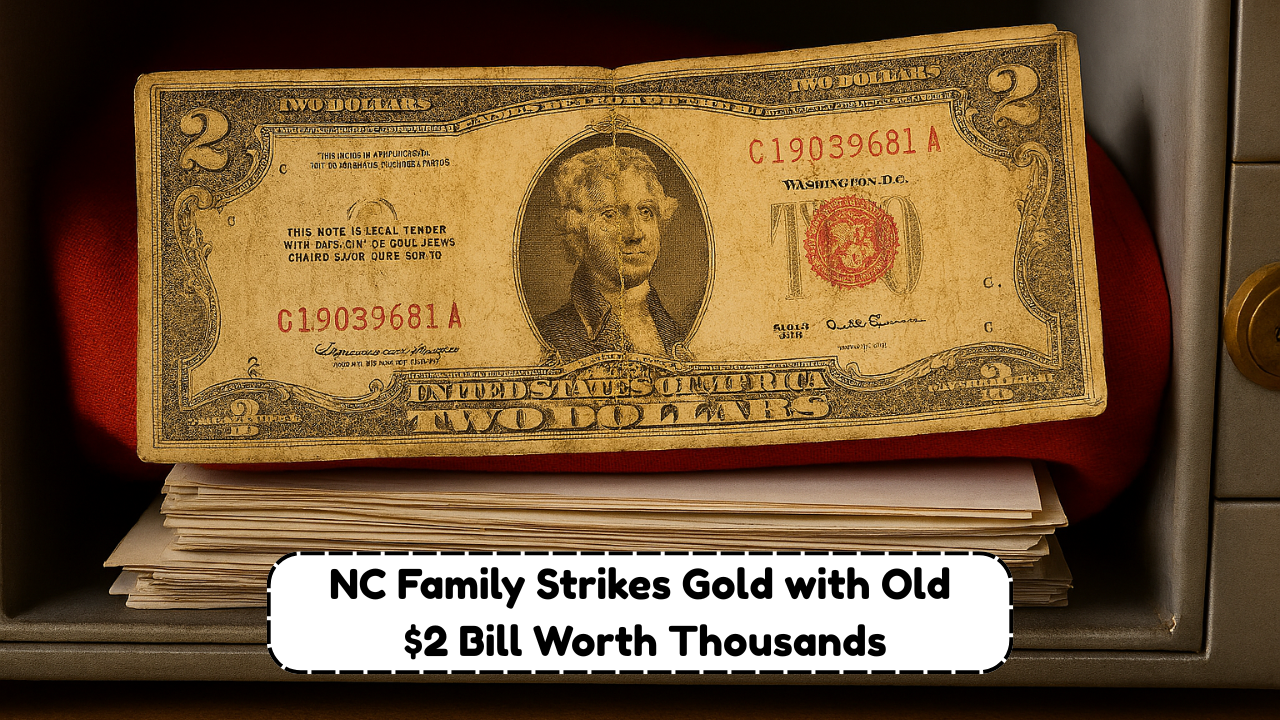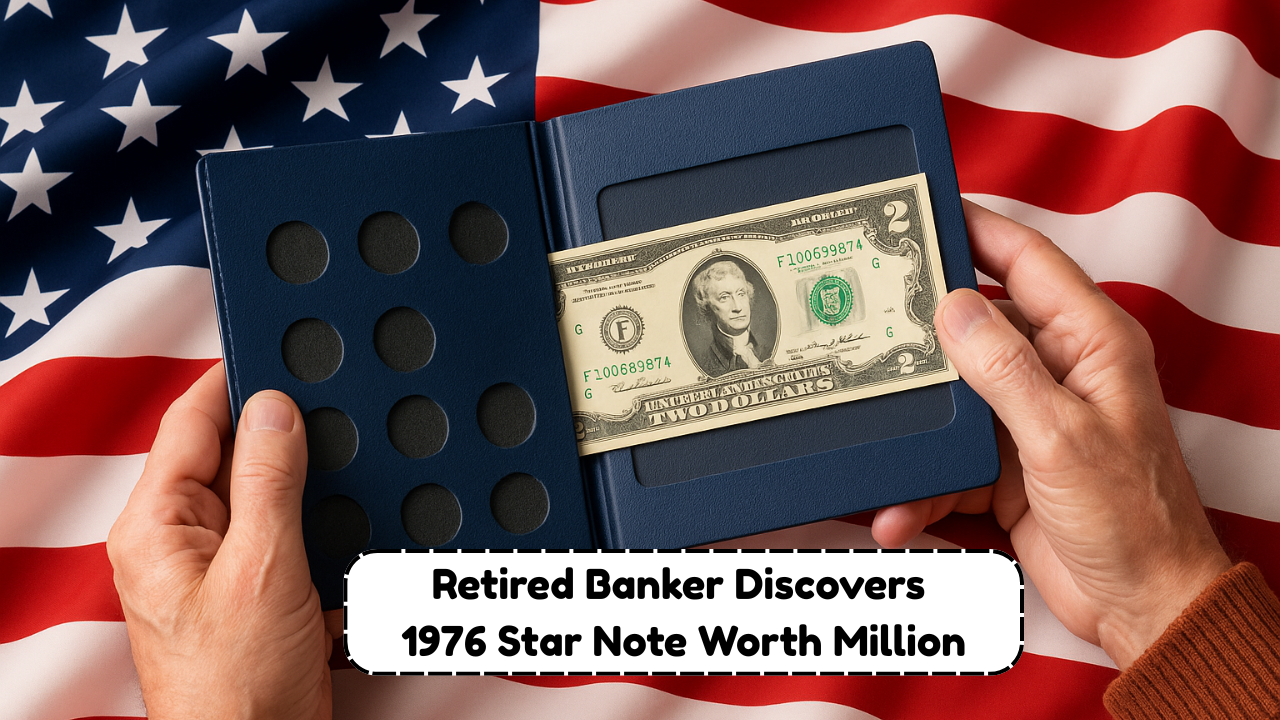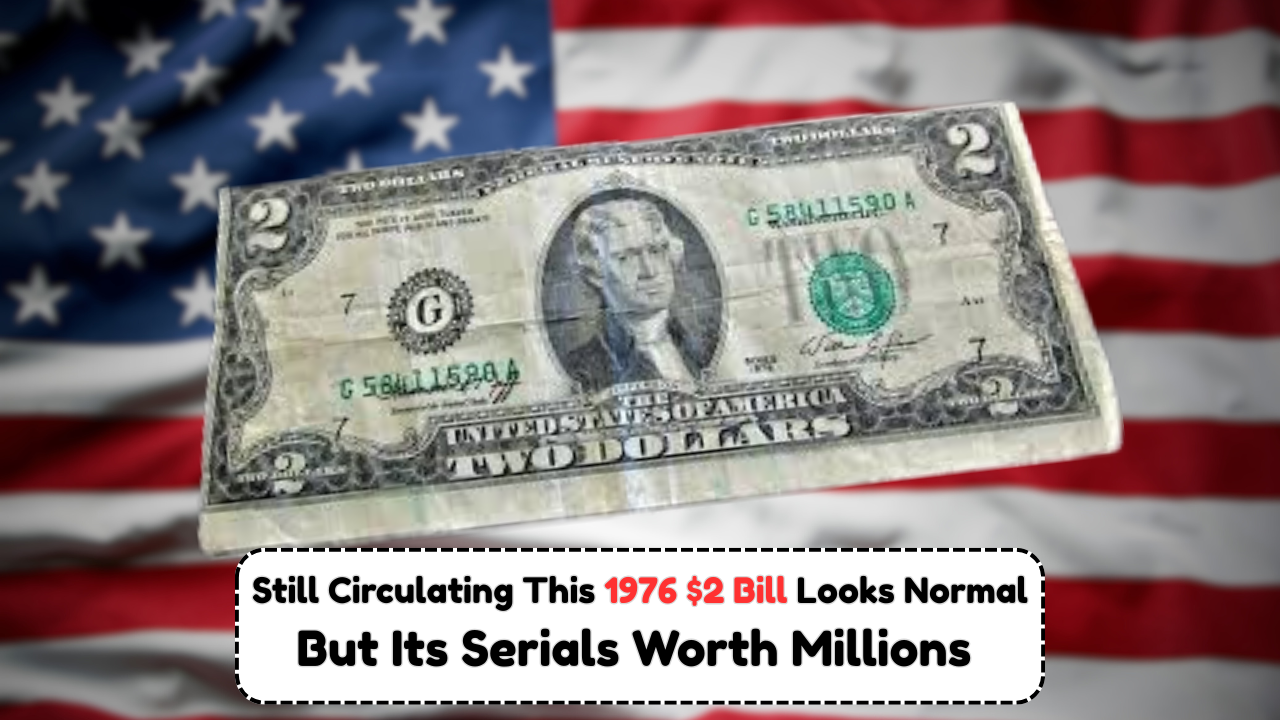A North Carolina family recently uncovered a rare 1953 $2 bill inside a long-forgotten safe deposit box, sparking excitement among collectors and casual currency holders alike. What seemed like a simple keepsake turned out to be a vintage note with substantial historical and collectible value. These early $2 notes are not only rare in pristine condition but can also be worth thousands depending on their series, seal color, and condition.
If you’ve ever stumbled upon old paper money, especially $2 bills, this guide will help you understand what makes the 1953 series so valuable — and how to determine if yours could be worth a fortune.
What Makes the 1953 $2 Bill Special?
The 1953 $2 bill is part of the U.S. small-size legal tender notes, and it has become increasingly desirable among collectors. This particular series was printed when the design of U.S. currency was still evolving post-World War II, and only a limited number of these notes survive today in excellent condition.
Key Features of the 1953 $2 Bill
| Feature | Description |
|---|---|
| Series Year | 1953 (with sub-series: A, B, C) |
| Seal Color | Red (United States Note) |
| Portrait | Thomas Jefferson |
| Reverse Design | Monticello (Jefferson’s Virginia estate) |
| Dimensions | 6.14 x 2.61 inches (standard U.S. bill size) |
| Printing Duration | 1953–1963 |
| Paper Type | Cotton-linen blend with red/blue security fibers |
| Issuing Authority | U.S. Treasury Department |
The distinct red seal and bold vintage design make the 1953 $2 bill stand out immediately from modern currency.
The North Carolina Find – Why It’s Significant
The family found the 1953 note while sorting through an old safe deposit box after a relative’s passing. Initially overlooked as just “old money,” a closer inspection revealed a well-preserved 1953 $2 bill — possibly in near-uncirculated condition.
Why This Discovery Is Important
- Shows how valuable notes can be hiding in family collections.
- Highlights the increasing collector interest in early $2 bills.
- Encourages others to inspect inherited or stored documents carefully.
Some vintage bills sit unseen for decades — and could now be worth thousands.
Types and Sub-Series of the 1953 $2 Bill
The 1953 $2 bill includes multiple sub-series, each with subtle differences in signatures and printing batches. Some are rarer than others, and collectors are especially keen on notes with unique serial numbers or star symbols.
Breakdown of 1953 $2 Bill Sub-Series
| Series | Secretary of Treasury | Treasurer | Rarity Level |
|---|---|---|---|
| 1953 | G. Humphrey | Ivy Baker Priest | Moderate |
| 1953 A | G. Humphrey | Ivy Baker Priest | Moderate |
| 1953 B | R. Anderson | Elizabeth Rudel Smith | Less Common |
| 1953 C | C. Douglas Dillon | Kathryn O’Hay Granahan | Rare |
Collectors also pay close attention to star notes from each of these series, which replaced misprinted notes and are produced in lower quantities.
Value of the 1953 $2 Bill – How Much Is It Worth?
While a circulated 1953 $2 bill might only fetch a few dollars over face value, well-preserved notes — especially uncirculated, star, or rare series — can be valued well above $1,000. Some exceptionally rare examples have sold for over $4,500 at auction.
Value by Condition and Series
| Series | Circulated Value | Uncirculated Value | Star Note Value |
|---|---|---|---|
| 1953 | $5–$15 | $50–$125 | $100–$400 |
| 1953 A | $6–$20 | $60–$140 | $150–$500 |
| 1953 B | $10–$25 | $75–$160 | $200–$700 |
| 1953 C | $15–$30 | $100–$250 | $400–$1,200+ |
Star notes in top condition are the real standouts, with collectors often bidding aggressively for these rare replacements.
How to Tell If Your 1953 $2 Bill Is Valuable
Not every old bill is a goldmine, but a few key details can help you determine whether yours is worth holding onto or professionally appraising.
Identification Tips
- Check the Seal Color: It should be red for legal tender notes from 1953.
- Look for a Star: A star at the beginning or end of the serial number indicates a replacement note (scarcer and more valuable).
- Assess the Condition: Crisp, uncirculated bills hold the most value.
- Confirm the Series: Sub-series “C” and certain star note runs are significantly rarer.
- Watch for Fancy Numbers: Serial numbers like 00000001 or repeated digits can increase value.
Keeping the note flat, protected, and untouched increases the chance it holds its full market value.
Where to Sell or Appraise a 1953 $2 Bill
If you suspect your 1953 $2 bill is valuable, there are several reputable channels to sell or have it appraised.
Trusted Places to Sell
- Coin shops and currency dealers (preferably certified)
- Online platforms such as eBay, Heritage Auctions, and Stack’s Bowers
- Numismatic events and currency expos
- Online collector forums and groups
- Professional grading services like PCGS or PMG
Always compare multiple offers and check recent sales data for similar notes before parting with your bill.
Tips for Storing Vintage Currency
Preserving your bill properly can make the difference between a $20 note and one worth hundreds or more.
Best Storage Practices
- Use currency holders made of archival-safe materials.
- Avoid folding or creasing the note.
- Store in dry, dark, and cool environments.
- Handle with gloves to avoid oil and dirt transfer.
- Never laminate or tape vintage currency — it reduces value dramatically.
Treating vintage bills with care ensures they’ll continue to appreciate over time.
The North Carolina family’s discovery of a 1953 $2 bill is more than just a lucky find — it’s a reminder that history, value, and legacy can be sitting quietly in forgotten drawers or boxes. These notes offer a glimpse into the past, and for collectors, they provide an exciting opportunity to own a tangible piece of mid-20th century America.
If you’ve inherited or found old currency, it’s worth taking a second look — especially if it includes vintage $2 bills. One small star or perfect serial number could mean your old keepsake is actually a collectible worth thousands.
Frequently Asked Questions (FAQs)
What is special about a 1953 $2 bill?
The 1953 $2 bill features a red seal and Thomas Jefferson portrait. It’s a United States Note, not a Federal Reserve Note, making it rarer today.
How can I tell if my 1953 $2 bill is valuable?
Check for red seals, star serial numbers, crisp condition, and rare sub-series like 1953 C. Fancy serial numbers can also increase value.
Are all 1953 $2 bills worth money?
Not all are highly valuable, but most are worth more than face value — especially in uncirculated condition or if they’re star notes.
What is a star note?
A star note replaces a misprinted bill and is marked by a star symbol in the serial number. These are rarer and typically more valuable.
Can I spend my 1953 $2 bill?
Yes, it’s still legal tender, but collectors often pay more than face value, so it’s better to sell or appraise it first.
Where can I sell a 1953 $2 bill?
You can sell it to coin shops, collectors, online marketplaces, or through currency auction platforms.
How do I store my vintage $2 bill safely?
Use acid-free sleeves, avoid folding, and store in a dry, cool place away from sunlight.
What’s the most valuable 1953 $2 bill ever sold?
Some uncirculated star notes from the 1953 C series with rare serial numbers have sold for over $4,500 at major auctions.







